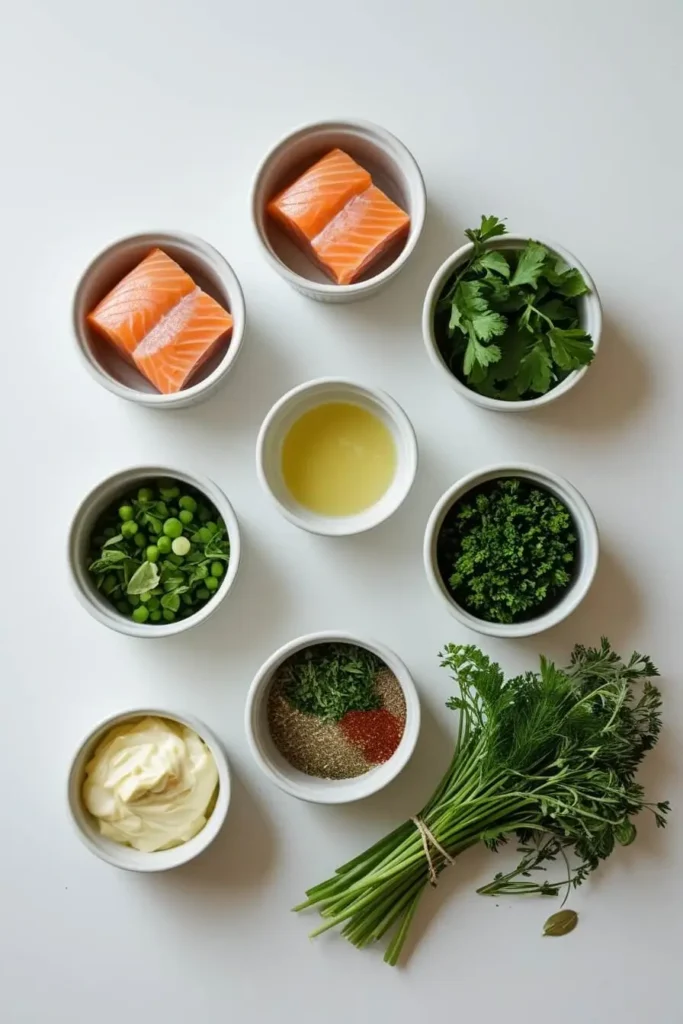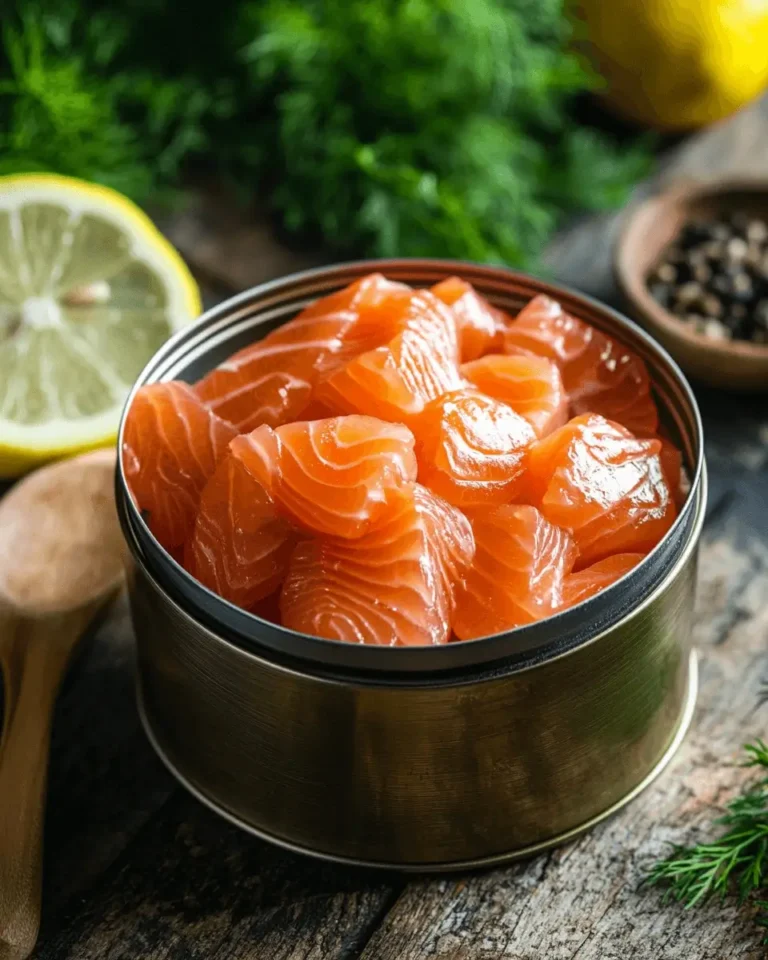Canned Salmon is a versatile and nutrient-dense food that has long been a staple in pantries around the world. It offers an effortless way to incorporate high-quality protein, omega-3 fatty acids, and essential vitamins into a variety of meals. As a convenient alternative to fresh fish, canned salmon provides all the benefits of its fresh counterpart, but with the added advantage of long shelf life and easy storage.
With its rich, distinct flavor and texture, it can be used in countless dishes, from salads and sandwiches to casseroles and spreads. It is particularly popular for those seeking a quick, healthy meal solution without sacrificing nutritional value. As food trends shift towards more sustainable and accessible options, canned salmon continues to grow in popularity, not only for its practicality but also for its environmental impact.
Moreover, canned salmon is often a more affordable choice compared to fresh fish, making it a reliable option for households on a budget. Whether you’re preparing a gourmet dish or a simple weeknight dinner, it serves as a tasty and cost-effective ingredient that can elevate any meal with minimal effort.
Table of Contents
About The Canned Salmon
Canned Salmon is a remarkable culinary ingredient that offers a wealth of nutritional benefits, convenience, and versatility. Available in a variety of types, including pink, red, and sockeye, this canned fish retains the essence of fresh salmon, delivering rich flavor and essential nutrients in every bite. It is a powerful ally for heart health, offering an easy way to meet dietary needs without the hassle of preparing fresh fish.
Beyond its nutritional advantages, canned salmon is incredibly versatile. It can be incorporated into an array of dishes, from creamy spreads and savory salads to rich pasta sauces and flavorful fish cakes. The canning process ensures that the fish maintains its integrity and freshness, even after extended periods of storage, making it an excellent pantry staple.
Another noteworthy aspect of canned salmon is its sustainability. Often sourced from wild-caught fish, it provides a more environmentally friendly option compared to other animal proteins. Additionally, it is a cost-effective alternative to fresh salmon, making it an accessible choice for individuals and families seeking high-quality protein without breaking the bank.
Ultimately, canned salmon is an indispensable ingredient that combines convenience, nutrition, and sustainability in one reliable package.
Why You’ll Love This Recipe
This recipe is a game-changer, especially when it comes to using canned salmon in the most delicious way possible. It’s not only quick and easy to prepare but also packed with rich flavors and essential nutrients. Canned salmon serves as the perfect base, offering a convenient and healthy alternative to fresh fish. Its natural oils contribute to a moist, flavorful dish that’s both satisfying and heart-healthy.
What makes this recipe stand out is the harmony of textures and tastes. The tender chunks of canned salmon blend beautifully with other ingredients, creating a dish that’s both comforting and exciting. Whether you’re preparing a light salad or a hearty casserole, canned salmon adds depth and richness without requiring hours in the kitchen.
In addition to being time-efficient, this recipe is also incredibly versatile. You can add a variety of seasonings or vegetables for extra crunch and flavor. The abundance of omega-3 fatty acids and protein makes it a nourishing option for any meal.
Ultimately, the ease, flavor, and nutritional benefits of this recipe will make it a go-to for busy weeknights or casual gatherings. Canned Salmon proves that a wholesome, satisfying meal doesn’t need to be complicated.
Required Ingredients
- Canned Salmon – The star of the dish. Opt for wild-caught for higher omega-3s and better nutritional value.
- Fresh vegetables – Onions, bell peppers, and spinach for added texture and color.
- Fresh herbs – Dill or parsley to enhance freshness and flavor.
- Mayonnaise or Greek yogurt – To bind the ingredients together with creaminess.
- Lemon juice – For a burst of brightness that cuts through the richness.
- Seasonings – Garlic, black pepper, and salt for a well-rounded, flavorful dish.

How to Make the Recipe (Step-by-Step)
- Prepare the ingredients: Start by draining the canned salmon and removing any bones or skin, if necessary. Flake the salmon into bite-sized pieces, ensuring it’s tender and ready to mix.
- Chop the vegetables: Dice the onions and bell peppers into small pieces. Roughly chop the spinach and set aside. These vegetables will provide color and crunch to the dish.
- Mix the base: In a large mixing bowl, combine the flaked canned salmon, chopped vegetables, and herbs. Add a generous dollop of mayonnaise or Greek yogurt for creaminess, making sure all ingredients are well-coated.
- Season to taste: Squeeze in fresh lemon juice and season with garlic, black pepper, and salt. Taste and adjust the seasoning if needed. The lemon will help cut through the richness of the canned salmon, balancing the flavors.
Tips for Success
- Choose high-quality canned salmon – Opt for wild-caught varieties for better flavor and nutritional value, including omega-3 fatty acids.
- Drain the canned salmon thoroughly – Remove excess moisture to maintain the ideal texture and consistency in your dish.
- Flake the salmon gently – Use a fork to break the fish into bite-sized pieces, preserving its delicate texture.
- Incorporate fresh vegetables and herbs – Add chopped onions, bell peppers, and spinach for crunch and vibrant color. Experiment with herbs like dill or parsley for extra flavor.
- Balance richness with acidity – A squeeze of lemon juice or a dash of vinegar will cut through the richness of the canned salmon and enhance its natural flavors.
- Taste and adjust seasoning – Season with salt, pepper, and garlic to ensure the dish is well-balanced and flavorful.
Variations and Customizations
- For a richer, more indulgent dish, add creamy ingredients like cream cheese or avocado. These will enhance the texture and richness of the canned salmon.
- If you’re craving a lighter option, swap out the mayonnaise for Greek yogurt or a tangy vinaigrette. This will create a fresher, more vibrant flavor profile.
- For those who enjoy a bit of heat, try adding chili flakes or a dash of hot sauce. The spice will complement the mild taste of the canned salmon.
- Experiment with different herbs such as basil, tarragon, or thyme to introduce unique aromatic notes, making the dish more interesting and flavorful.
- To make the dish more substantial, add grains like quinoa, couscous, or rice. This turns your canned salmon into a complete and satisfying entrée.
How to Serve Canned Salmon
- Serve canned salmon atop a bed of mixed greens, paired with a tangy vinaigrette. This light dish showcases the fish’s delicate flavor while adding freshness.
- For a heartier meal, use canned salmon in sandwiches or wraps. Spread creamy mayonnaise or Greek yogurt on bread or tortillas, then layer the salmon with lettuce and tomatoes for a quick, satisfying bite.
- Incorporate it into a savory pasta salad. Mix with cooked pasta, chopped vegetables, and a light dressing. For added flavor, toss in olives or capers.
- Serve it in a warm casserole or pie. Layer it with mashed potatoes or puff pastry for a rich, comforting dish perfect for family gatherings or cozy evenings.
How to Store Canned Salmon
- Unopened cans of it should be stored in a cool and dry place. A pantry or cupboard is ideal for this purpose.
- Keep it at room temperature, and avoid storing to prevent rusting of the can.
- Once opened, transfer any unused portion of it into an airtight container for refrigeration. This helps preserve its flavor and prevents contamination.
- Consume leftover it within 2 to 3 days for the best taste and texture. Avoid leaving it in the original can, as this can lead to oxidation and spoilage.
- If you need to store it for a longer period, freezing is a good option. Use a freezer-safe container or resealable bag, ensuring it’s tightly sealed to prevent freezer burn.
- When ready to use, defrost it in the refrigerator for 12 to 24 hours. While freezing may slightly alter its texture, it will still retain much of its flavor and nutritional value.
Recipe Card of canned salmon

Equipments
- Mixing bowl
- Fork (for flaking the salmon)
- Knife (for chopping vegetables)
- Cutting board
- Spoon (for stirring)
Ingredients List
- 1 Can Canned Salmon
- 1 tablespoon Mayonnaise Optional for creaminess
- 1 teaspoon Lemon juice For flavor balance
- 1/4 cup Onion chopped – Adds crunch
- 1/4 cup Bell pepper chopped – Adds color and crunch
- 1 tablespoon Fresh parsley For garnish
- Salt and pepper To taste
Step-by-Step Instructions
- Open the can of canned salmon, drain it, and remove any bones or skin.
- Flake the salmon with a fork into bite-sized pieces.
- Chop the onion and bell pepper into small pieces.
- In a mixing bowl, combine the flaked salmon, chopped vegetables, and parsley.
- Add mayonnaise and lemon juice for creaminess and flavor. Stir well.
- Season with salt and pepper to taste.
- Serve immediately on a bed of greens, in a sandwich, or as a wrap filling.
Nutrition
Notes
FAQ
- What are the health benefits of canned salmon?
It is an excellent source of high-quality protein, omega-3 fatty acids. These nutrients support heart health, brain function, and promote healthy skin. It also provides calcium, especially if you consume the bones, which help in strengthening bones and teeth. - How long can canned salmon be stored?
Unopened it can be stored for 1 to 5 years, depending on the expiration date printed on the can. It should be kept in a cool and dry place. Once opened, it should be refrigerated and used within 2 to 3 days for freshness. - Is canned salmon as nutritious as fresh salmon?
Yes, it retains most of the same nutritional benefits as fresh salmon. It is rich in omega-3 fatty acids, protein, and vitamins. However, fresh salmon may have a slightly higher content of certain vitamins, and it might contain higher levels of sodium. - Can canned salmon be used in recipes other than salads?
Absolutely. it can be mixed with various dishes such as salmon patties, casseroles, pasta, sandwiches, wraps, and even in soups. Its versatility makes it an easy and quick ingredient for many meals. - How do you prepare canned salmon for a recipe?
To prepare it, simply drain the liquid from the can and flake the fish with a fork. You can remove any bones or skin if you prefer, although they are edible and nutritious. It can be used as-is for most recipes or combined with other ingredients to enhance flavor and texture. - Does canned salmon contain bones and skin?
Many cans of it include the bones and skin, which are soft and edible. The bones are rich in calcium and provide additional nutritional benefits. However, if you prefer to avoid them, there are options for Canned Salmon that come boneless and skinless. - What are the best ways to cook with canned salmon?
Canned salmon is incredibly versatile. It can be added to salads, mixed into pasta dishes, used in sandwiches or wraps, made into salmon cakes, or incorporated into soups. It’s also great for quick meals like salmon patties or in a light, creamy salmon dip. The options are endless, making it a convenient ingredient to have on hand.

